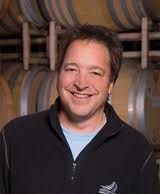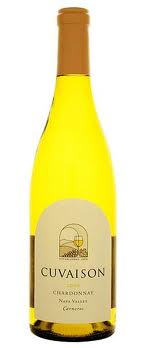Those of us of a certain age remember when the Napa Valley was a quiet farming community where prunes shared the land alongside the grapes. Trendy restaurants weren’t even a gleam in Chef Michael Chiarello’s eye, and the Robert Mondavi Winery was the new kid in town.
 Back in the day, the Napa Valley wine boom had not yet reached a full-throated roar, but there were signs that it was coming, with exciting new wineries springing up from the city of Napa at the southern tip of the valley all the way to Calistoga, its northern border.
Back in the day, the Napa Valley wine boom had not yet reached a full-throated roar, but there were signs that it was coming, with exciting new wineries springing up from the city of Napa at the southern tip of the valley all the way to Calistoga, its northern border.
You know the names: Chateau Montelena, Stag’s Leap Wine Cellars, Trefethen, Cakebread, Freemark Abbey, Caymus, Grgich-Hills, Schramsberg. The list goes on.
The landscape of the Napa Valley has changed, however, over these past three decades, with literally hundreds of new wineries and hordes of visitors seeking the latest and best new thing.
Winemaker Steve Rogstad called them the "lifestyle" wineries when I caught up with him recently. Rogstad has been a winemaker at Cuvaison for nearly a decade now. He served prior stints at Clos Pegase, Rombauer and Saintsbury, all in the valley.
Cuvaison was in that early wave of wineries that ushered in the current era of success and prosperity that have made the Napa Valley America’s premiere wine region. Its first vineyard was established in 1969. John Thacher, the winemaker before Rogstad, was named Winemaker of the Year by Wine & Spirits Magazine in 1988.
The history and record of achievement at Cuvaison is impressive. Yet, until I sat down with Rogstad over dinner recently, I realized I hadn’t tasted a Cuvaison wine in several years. Not that I could remember.
The latest new best things in wine seem to get most of the attention these days. So it was high time I took a step back and visited an old friend, in this case Cuvaison.
 At one time, the Cuvaison Chardonnay had been among my favorites. It was a no-brainer whenever I spied it on a wine list. First because it was always well balanced and delicious, second because it was usually well priced.
At one time, the Cuvaison Chardonnay had been among my favorites. It was a no-brainer whenever I spied it on a wine list. First because it was always well balanced and delicious, second because it was usually well priced.
So I was especially curious about the 2009 Cuvaison Carneros Chardonnay Rogstad was about to pour; more so after he told me the retail price was a modest $22 a bottle. I immediately picked up on the signature note of lemon oil/lemon creme that is what I look for in the finer California Chardonnays such as Nickel & Nickel, Patz & Hall and Kistler.
This Chardonnay was beautifully balanced and exhibited considerable finesse and refinement.
I was thinking how nice it was to reconnect with an old friend.
What really impressed me, though, was the 2009 Carneros Estate Pinot Noir at $35. It struck me as very Burgundian, and perhaps I shouldn’t have been surprised, for Rogstad did a brief stint in France early in his career. The Pinot was light and elegant on the palate, yet not lacking for flavor, and it had a bit of grip on the finish, which is so French. So many California and Oregon Pinots today are almost sweet on the finish.
The one new thing Rogstad had to show me was a luxury Cabernet Sauvignon called Brandlin, made from grapes grown in the historic Brandlin family vineyard on Mount Veeder. Cuvaison purchased the vineyard in 1998, and the decision was made to bottle a Cabernet that would serve as a tribute to the family’s place in the history of Napa Valley viticulture.
This is a serious Cab at the serious price of $90 a bottle. What this wine told me was that while Cuvaison clearly has solid ties to the past greatness of the Napa Valley, it just as clearly has at least one foot planted in the new Napa Valley that exists today.
8
